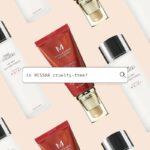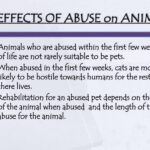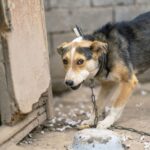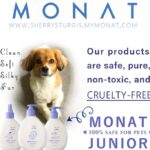In recent years, there has been an increasing awareness and concern regarding animal testing in the cosmetics industry. With consumers becoming more discerning and advocating for cruelty-free practices, brands are re-evaluating their testing methods. One such brand that has taken notable strides in this arena is CoverGirl. Their recent acquisition of the esteemed Leaping Bunny certification has raised questions and hopes among animal activist circles and conscientious consumers alike. But what does it truly mean for CoverGirl to be labeled as cruelty-free? Let’s explore the intricacies of this certification and its implications.
The term “cruelty-free” refers to products that have not been tested on animals at any point during their development. This assurance is pivotal for consumers who wish to avoid contributing to animal suffering. CoverGirl’s new certification signifies a commitment to uphold this standard, ensuring that neither the products nor the individual ingredients undergo testing on animals. However, the journey to attain such a status is neither simple nor straightforward.
The Leaping Bunny certification, which CoverGirl now proudly holds, is one of the most stringent and recognized cruelty-free certifications in the world. This program is administered by the Coalition for Consumer Information on Cosmetics (CCIC), which includes respected animal protection organizations. Brands seeking this certification must provide clear evidence of their animal testing policies and undergo regular audits to ensure compliance. This level of accountability provides consumers with confidence that their choices are aligned with their ethical beliefs.
Many consumers may wonder about the broader implications of CoverGirl’s certification. For one, it sets a precedent within the cosmetics industry. As a prominent player, CoverGirl’s shift towards cruelty-free practices may influence other companies to follow suit, promoting a more humane approach to product development. The ripple effect can encourage both large and small brands to reconsider their testing practices, potentially leading to a widespread reduction in animal testing.
Importantly, this shift also comes at a time when consumers are actively seeking transparency from brands. They want to understand the origins of the products they use and ensure that those products align with their ethical beliefs. CoverGirl’s initiative not only appeals to a growing segment of the market that prioritizes cruelty-free options but also underscores the need for accountability in a world where animal testing has historically been prevalent.
However, the journey is not without skepticism. Questions frequently arise regarding the efficacy of certifications like Leaping Bunny. Critics argue that certifications alone do not absolve brands from previous unethical practices or raise the question of whether attaining such a certification might merely be a marketing strategy. While CoverGirl has made significant strides, it is crucial for consumers to remain vigilant and continue to scrutinize brands for their commitment to animal welfare.
Furthermore, there is an ongoing dialogue about the challenges of completely eliminating animal testing, especially when it comes to safety assessments. Some industries contend that animal testing is still necessary to ensure the safety of new chemicals. The scientific community continues to explore alternative methods that can replicate human responses without the ethical implications associated with animal testing. The push for innovative solutions could further change the landscape of cosmetic testing in the coming years.
Despite these conversations, CoverGirl’s commitment to cruelty-free practices reaffirms a critical and evolving aspect of consumer culture. It emphasizes the importance of making informed purchasing decisions, where every product reflects a choice toward a more humane future for all living beings. Choosing cruelty-free products is a step many consumers have embraced, as they advocate for transparency, integrity, and compassion in the beauty industry.
As CoverGirl steps into this new phase of its brand ethos, it is clear that the journey toward cruelty-free practices is part of a larger movement that emphasizes respect for animal rights. The company must continue to reinforce its pledge through concrete actions, transparency in operations, and unwavering adherence to cruelty-free principles. Moreover, this status invites a broader dialogue about the ethical implications of beauty and the responsibilities of brands toward animals.
In conclusion, CoverGirl’s recent achievement of the Leaping Bunny certification marks a significant milestone for the brand and the cosmetics industry at large. It serves as a poignant reminder of the power consumers hold to influence corporate practices. By prioritizing cruelty-free products, shoppers are not merely purchasing beauty items; they are making robust statements about their values and fostering an environment that advocates for change.
As the industry continues to evolve, we encourage consumers to familiarize themselves with cruelty-free practices and support brands that align with these ethical standards. Ultimately, true change occurs when individuals collectively raise their voices against practices that harm animals. The commitment to a cruelty-free existence is one that requires vigilance, education, and relentless advocacy, ensuring that all living beings are treated with the respect and kindness they deserve.







